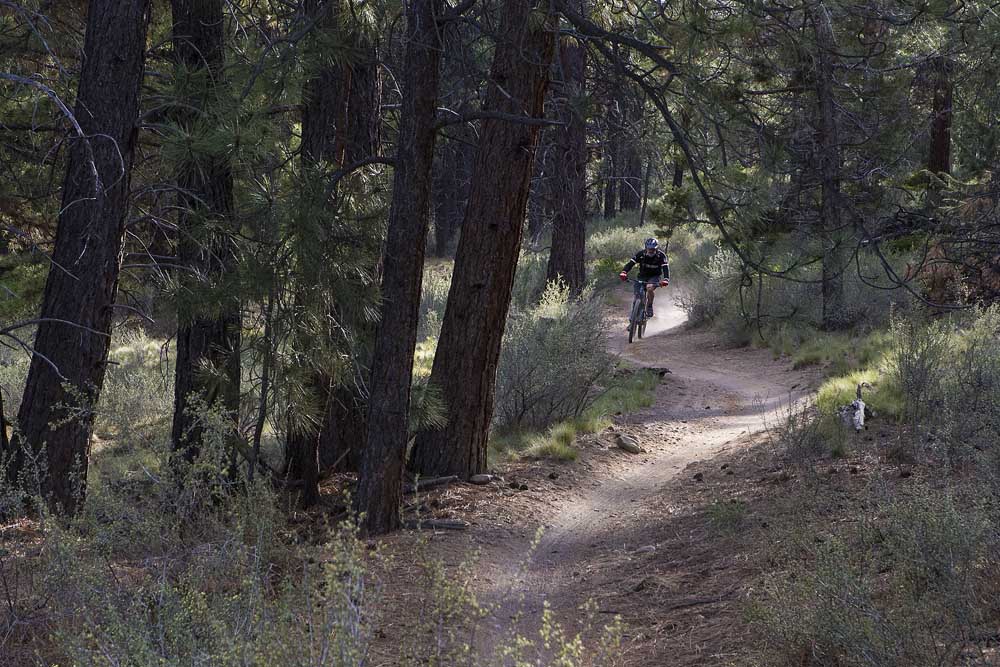Oregon Wild leads protest against cutting large trees in Phil’s Trail area
Published 4:30 pm Friday, March 4, 2022

- A mountain biker makes his way down a section of Phil’s Trail in 2020.
The Bend-based environmental nonprofit Oregon Wild has started an online petition to protest the cutting of large ponderosa pine trees in the Phil’s Trail area.
The trees are marked with blue paint by the U.S. Forest Service and are part of a timber sale from 2020, according to Jean Nelson-Dean, a spokesperson for the Deschutes National Forest. Forest thinning projects are conducted to reduce wildfire risk.
Trending
In its petition, Oregon Wild describes the trees as “old growth” and says the trees should be spared because they provide habitat for wildlife and help to fight climate change by storing carbon.
“During the planning of this logging, the public was told that it wouldn’t include cutting of old-growth trees,” said Erik Fernandez, wilderness program manager for Oregon Wild. “But now at the last minute before the chain saws and bulldozers arrive, we learned it will.”
“The rationale is fuels reduction, but these old trees have the thickest bark and are thus the most fire-resistant, showing it’s not really about fuels reduction but about logging,” he added.
Nelson-Dean said from the Forest Service perspective, the trees are not old-growth.
“The trees, though over 21 inches in diameter, do not display the characteristics of old-growth trees and were appropriately marked based on our environmental analysis in 2019,” said Nelson-Dean.
Nelson-Dean said old-growth trees typically display a rounded crown, few dead lower branches, and orange-colored bark. The ones marked around Phil’s Trail don’t have these traits.
Trending
“They are not old-growth trees but are being characterized as old-growth by Oregon Wild,” she said.
Nelson-Dean adds that while the Forest Service recognizes the concerns raised by nonprofits and other organizations, no immediate resolution can be made as the timber sale has already been finalized. It is currently not known when these particular trees will be removed but the timber operator is working in the area.
Profits from timber are reinvested in forest restoration activities such as mowing, grinding up underbrush and prescribed burns.
These activities “will further improve the resiliency of the forest and would otherwise come at a cost to the taxpayers,” said Nelson-Dean.
The Deschutes Collaborative Forest Project, which seeks to improve forest health and management, has joined Oregon Wild in its concern over the fate of the trees.
The collaborative includes a diverse range of members including The Nature Conservancy, Oregon State University Extension and the Oregon Department of Forestry.
The steering committee of the collaborative conducted a field trip in February to review the area, according to a statement sent to The Bulletin by Bend Mayor Sally Russell.
The committee observed that the trees marked for removal are “not necessarily” old-growth but were older and larger than the standard 60- to 80-year-old trees that are common in the west Bend area. Some committee members recommended retaining the old trees in the stand.
The steering committee of the collaborative forest project will meet again next week to discuss ways to ensure that Forest Service treatments meet their vision for the area, according to the statement.
The goal of the Deschutes collaborative and the Forest Service is to produce more large, old trees with wide spacing, said Deschutes County Commissioner Phil Chang, who said the trees marked for removal “may not have been the right ones.”
“This doesn’t mean that overall the Forest Service is not doing a good job or that we are not moving the forest in the right direction at the landscape scale,” said Chang. “This is just a handful of complex and potentially problematic acres within 14,500 acres of commercial treatment.”
Chang said going forward he would like the number of problematic acres reduced to zero.
“I believe we can get closer to that target by refining our planning, implementation, and monitoring processes and our recommendations within the collaborative and within the Forest Service.”







